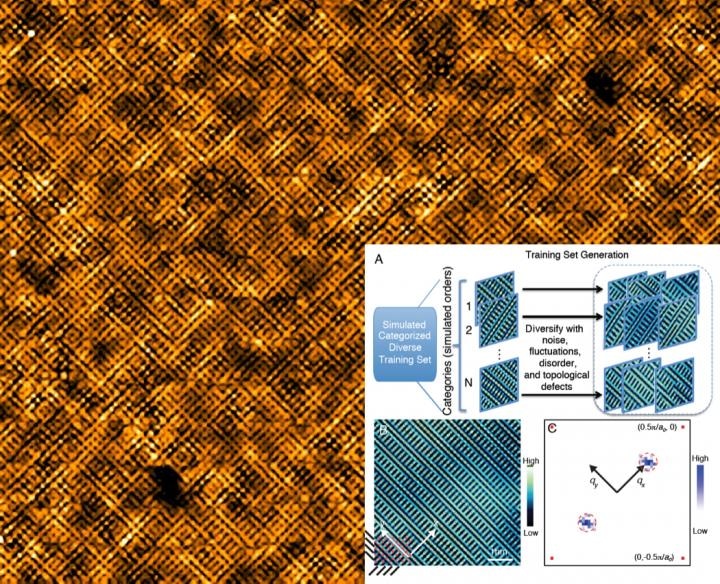Jun 26 2019
For the last century, materials like silicon and gold have been channels to the force which has fueled civilization—electronics. The electrons’ behavior in all such traditional materials is simple, that is, they mostly ignore one another.
 Background: a real experiment image of electron density from one of the group's microscopes. Inset: the architecture of ANN that was trained to 'look at' such images and report back what states of electronic matter are hidden therein. (Image credit: JC Séamus Davis)
Background: a real experiment image of electron density from one of the group's microscopes. Inset: the architecture of ANN that was trained to 'look at' such images and report back what states of electronic matter are hidden therein. (Image credit: JC Séamus Davis)
Conversely, upcoming electronics fabricated for quantum technologies demand the development of innovative quantum materials. For example, in quantum materials such as high temperature superconductors, interactions between electrons are extremely strong and the electrons also behave quite strangely, so much so that they have defied explanation, until now.
However, at present, researchers have made a major breakthrough with regards to the method and understanding. Predicated on a range of 80 artificial neural networks (ANN) that were designed and trained by the researchers to detect varied forms of electronic matter, machine learning has come across a novel state known as a Vestigial Nematic State (VNS).
I have focused on visualisation of electrons at atomic level. Twenty years ago we developed a microscope that could see directly where all electrons are in the quantum materials, and how the function. In this new collaboration with Professors Eun-Ah Kim (Cornell) and E. Kathami (San Jose State), we fed an electronic image archive gathered over about 20 years—1000s of electronic structure images—into these artificial neural networks. To my amazement it actually worked!
JC Séamus Davis, Study Lead Author and Professor, Department of Physics, University of Oxford
JC Séamus Davis continued, "The Vestigial Nematic State had been predicted by theorists but there was no experimental evidence. It was thrilling to see how the new machine learning technique discovered it hiding in plain sight."
For general scientific method, it is a milestone because it shows how machine learning methods are capable of processing and identifying certain symmetries of extremely intricate image-arrays from electronic quantum matter data.
By combining quantum matter visualization with machine learning, the researchers hope that it will expedite the developments in quantum material, particularly in the field of high-temperature superconductivity, in the search for room temperature quantum computers.